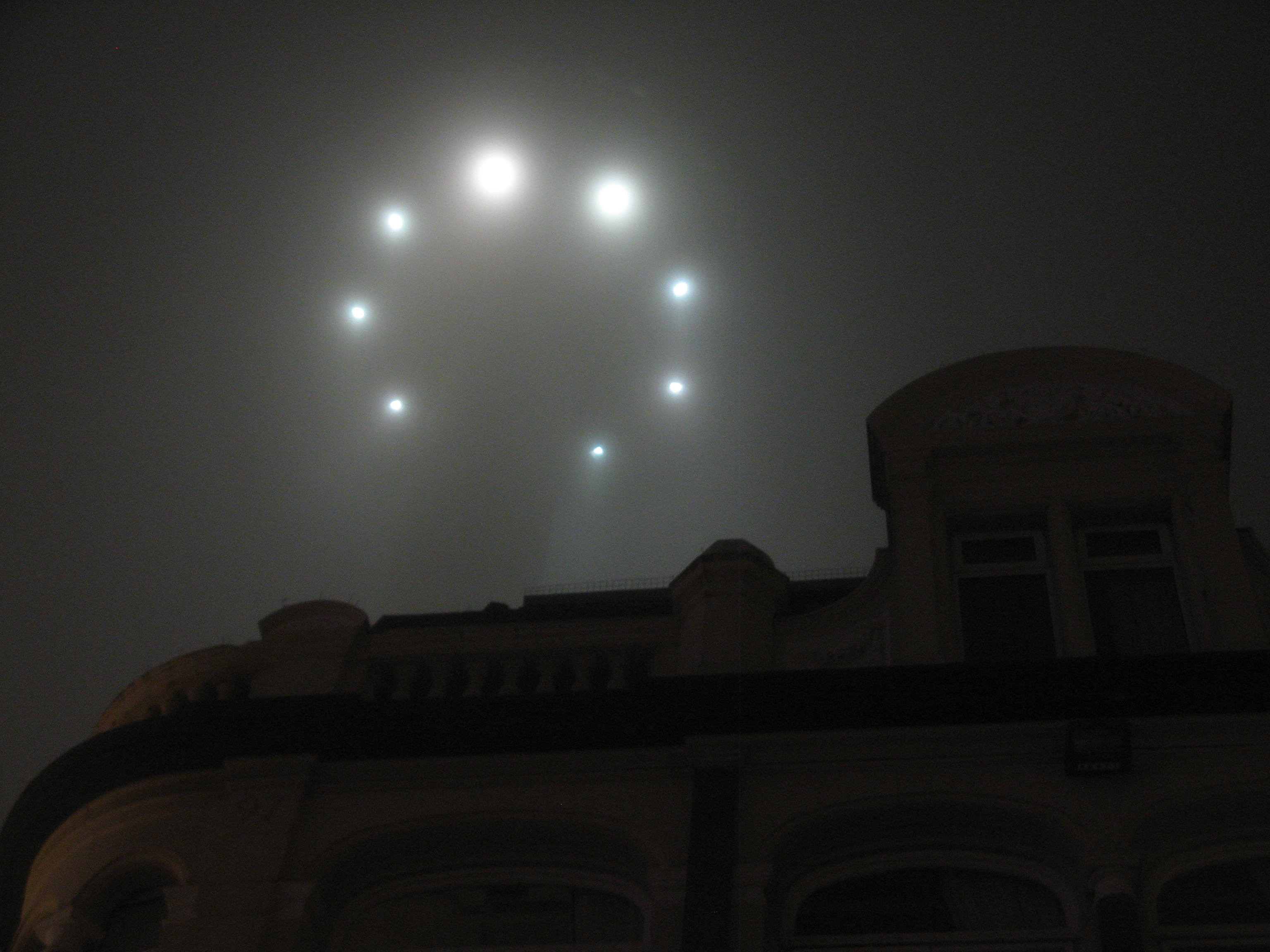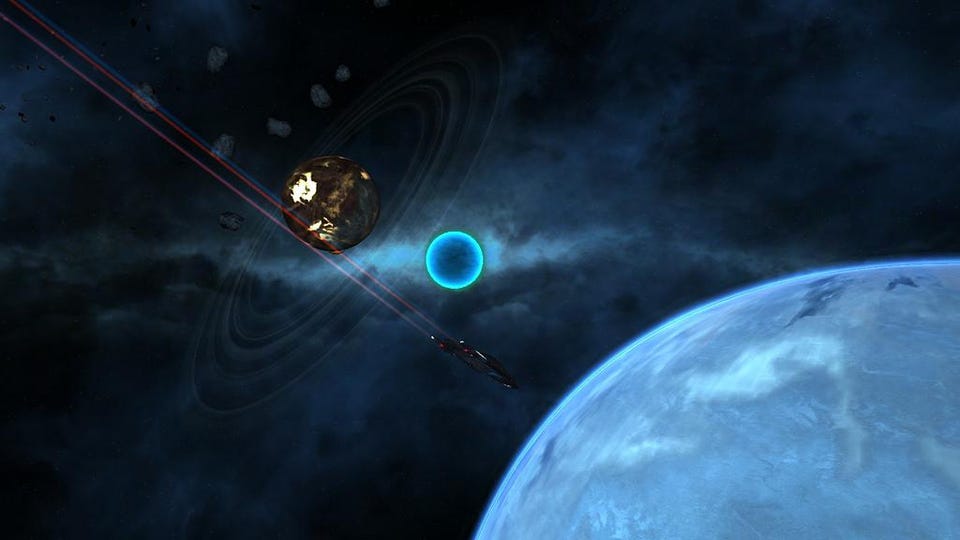I’m a PhD astrophysicist, and I once saw a UFO

- Whenever you see something that you weren’t expecting, it’s important to keep an open mind and investigate the possibilities.
- But in the absence of decisive observations or measurements, it’s also important to remain skeptical that anything you saw was beyond the realm of the known.
- When we take a look at the evidence available, it’s impossible to rule out certain exotic scenarios, like aliens, but the evidence is certainly against it.
Every once in a while, even in the most physically grounded of scientific disciplines, it’s important to entertain wildly unlikely scenarios. No possibility, no matter how far-fetched it seems, is immune from scientific consideration. As long as the potential explanations that you raise are grounded in physical reality, and as long as they can be subjected to experimental and/or observational testing and verification, you have the capacity to uncover any truth about the Universe, even if it has remained obscure to all of humanity until now.
One of the more unusual phenomena that’s been observed by a great many people throughout history — including during the modern era — is that of either unidentified flying objects (UFOs) or unexplained aerial phenomena (UAPs). Most of us, even with our limited experience of looking at the sky, can easily recognize what’s an airplane, what’s an artificial satellite, what’s a star or planet, and what’s an atmospheric phenomenon, like lightning or clouds. Whenever something doesn’t line up with one of those explanations, it only makes sense that our curiosity is piqued.
In December of 2006, shortly after completing my PhD studies in theoretical astrophysics, I myself saw an object in the sky that, to this very day, I’ve encountered no satisfactory explanation for. Here’s how, as a scientist, I approach the fact that this event occurred in my life.

Back in December of 2006, I was visiting a friend and colleague in New Mexico, and we spent a fair amount of time driving through the desert surrounding areas like Santa Fe and Los Alamos. One day, we went to Bandelier National Monument, which contains the homes and territories of a number of historic Native American civilizations, some of which date back nearly 1000 years.
On the drive back, the sky darkened as night fell. We were the only car on the road in either direction, and the stars began to appear wherever the sky wasn’t covered by a thin selection of wispy clouds. All of a sudden, off in the distance but high above the horizon was a glowing, blue, ellipse-shaped light. It first appeared stationary but then started to slowly move: from left-and-away from us to rightward-and-toward us. As it got closer, it brightened but never appeared to be anything other than a solid blue disk, and it seemed to pick up speed at an alarming rate. It then sped off to the right, faster and farther away from us, and after about two or three seconds of moving at what was its top speed, the light simply went out.
That was it. That was my experience. I was both shocked and bewildered that it happened and curious about what it meant. I turned to my friend and asked them, “Wow, what do you think that was?” And they responded to me in the most puzzling way I could’ve imagined, asking, “What do I think what was?”
I continued, “That light! That weird blue light that just seemed to fly overhead, that moved off at a weird angle, and then just disappeared altogether?”
“Oh, I’m not sure. I didn’t get a good look,” was all they said in response.
But even if they hadn’t seen it, I knew what I saw. Now, even back in 2006, when I was only 28 years old, I had still seen my share of strange objects that I’d struggled to identify, including various lights in the sky. But this experience was distinct, in a large number of ways, from all of them, and was definitely a phenomenon that I couldn’t chalk up to any of the possibilities I’d encountered previously.

Over the course of my life, I’d seen objects I couldn’t identify in the sky. Occasionally, as a child, I’d seen what appeared to be a flashing light close to the horizon. Unlike airplanes, which would flash some mix of blue/white and red and would discernibly move relative to the background stars over time, it would simply hover there, flashing a variety of colors but always remaining bright.
Much to my chagrin, I later realized that the “mysterious object” I would sometimes see was simply Sirius, the brightest star in the sky. From my northern latitudes, Sirius was only visible during the winter months of the year, and when I did see it, it was particularly low on the horizon: bright enough to be seen through Earth’s atmosphere, but low enough so that it had to pass through an enormously thick amount of that atmosphere before the light made it to my eyes. That was the cause of the unusual colors and the twinkling; a rather mundane phenomenon.

About three times in my life, I’d seen something that was a little more notable: a series of bright, white lights in the distance that would appear to move vertically, both up and down. Once, I saw three separate lights in motion; once, there were four; and once, there were more than that, perhaps seven or so. How odd, I thought, that there would be these whitish lights that appeared to ascend and descend far away from my perspective.
What could these unexplained aerial points-of-light actually be?
The first time it happened to me, I was young, and quite frightened by what happened. But the second time that it occurred, I was already a young adult, and I knew about the National UFO Reporting Center. I gave them a call and they asked me where I was and what I saw. I told them about the four lights, in the distance, independently moving up-and-down in the night sky, and gave them my location. It was only seconds later that the voice on the phone calmly explained to me that there were other reports of what they believed to be military aircraft being tested nearby, and that what I was seeing was almost definitely just that.

It was such a satisfactory explanation that the third time that I saw the ascending and descending lights, even though I was in a different location, I didn’t even question or report it. Surely, once again, these were military craft being tested, and because I had seen a similar phenomenon each time I had such an experience, there was no longer anything that I felt needed an explanation.
But this blue light was different. I won’t say that it wasn’t military equipment, but I can definitely attest that it wasn’t at all like any of the phenomena I had seen previously. Whatever I was seeing that night in New Mexico, it was decidedly different from anything I had ever seen before (or since), and to this day, I’ve never gotten a satisfactory explanation for what it could have been.
So yes, I can say that I’m one of the very few people to truly see a UFO: something that I would definitively describe as an unidentified flying object. (If you prefer the term UAP, or unexplained aerial phenomenon, because of the stigma associated with UFOs, I’m happy to go by either one.) But even though I cannot fully explain what I saw, in no way do I think it was an alien spacecraft.

Certainly, there are people who’ve seen weirder UFOs or UAPs than I have. Rockets have launched and spiraled out of control. Other tests, many of which were no doubt conducted in secret, have gone awry and flown over populated areas by mistake. At still other times, untracked debris in space has re-entered Earth’s atmosphere, leading to bright fireballs that don’t coincide with any known meteor shower.
But in every instance where I’ve ever had the experience of seeing one or more lights that behaved bizarrely, including the incident I experienced in New Mexico, I’ve asked myself whether it’s reasonable that a military aircraft could have created it.
For me, that would be the simplest default explanation. After all, I live in the United States of America, a country whose annual military budget is right around $750 billion. It’s a near-certainty that the military is going to be conducting tests, including test flights at all hours of the day-and-night, that civilians like me will never know about. Unless, of course, we happen to simply catch a glimpse of it, by being in the right (or wrong) place at the right (or wrong) time.

One of the more interesting things I’ve since learned is that UFO and UAP sightings are extremely common in the state of New Mexico; that’s where Roswell is infamously located, as well as the UFO Museum. But what’s also present in New Mexico are a series of military bases, including the largest (by area) base in the world: White Sands Missile Range. However, that particular military base, like the relatively nearby Holloman Air Force Base, is located in the southern part of the state; it’s very unlikely that an aircraft from there would be located all the way up north near Los Alamos.
But there are two other military bases not so far away that could have been responsible for the origin of what I saw: Kirtland Air Force Base, located in Albuquerque, and Los Alamos Demolition Army Base. That latter base, based on maps of the area, was extremely close in proximity to where I myself laid eyes upon that strange blue elliptical light back in 2006. Given the facts that:
- many UFO/UAP sightings are military aircraft,
- most humans who see UFOs/UAPs, including me, do not have full, comprehensive knowledge of the full capabilities of experimental aircraft being tested the military,
- and that there was a military base extremely close by to where I saw the most bizarre UFO I’d ever seen,
it seems overwhelmingly likely that the most mundane explanation — that what I saw was some sort of military aircraft or device — is probably correct.

Can I rule out the possibility that it was aliens?
No.
But I also can’t rule out other possibilities that seem far-fetched to me, but still seem less far-fetched than aliens. Assuming it wasn’t a military aircraft, I can also imagine that it was:
- a powerful type of searchlight that was reflecting off of the clouds,
- a projected image, like a hologram, that happened to be visible to me at my specific location,
- a commercial entity, such as a car dealership, that was testing its lights at full power,
- a new type of weapon or device at extremely high altitudes, possibly even in space, that caused the elliptical-shaped light.
Do I think any of these explanations are likely?
No, not really. I just don’t think that they’re any less likely than “aliens” as an explanation, and I wasn’t able to either repeat my observations or get independent confirmation. I had no high-resolution photos, as my phone at the time didn’t even have a camera. Whatever it was, there was no compelling reason for me to consider, realistically, that it would have been anything other than a military aircraft or light.

It’s also possible — and I don’t like to entertain this possibility — that despite how certain I am of my own experiences, that my own senses are untrustworthy. I know of many instances where I (or others) have misremembered events, as though one’s brain had simply created a fictional, inaccurate account of the events that occurred. We know that firsthand accounts of events such as:
- out of body experiences,
- alleged alien abductions,
- and the Mandela effect,
have no corroborating physical evidence and are likely fully explicable via the brain chemistry of the people who experience it.
I’m not saying that I know enough to judge the merits of John Mack’s research, to pass judgment on the nature of UFO sightings recorded by military pilots, or to explain 1994’s Ariel School incident in Zimbabwe. But I am saying that given the lack of what should be easily available evidence — high-resolution photos of aliens or UFOs, a GPS device that records your (abducted) location, or physical evidence of Nelson Mandela’s death-in-prison, the Berenstein (as opposed to Berenstain) Bears, or a packet of incorrectly-colored Walker’s crisps — we cannot responsibly draw such an outlandish conclusion.
When you can’t explain what you yourself have seen, it’s easy to let your imagination run wild. We should, however, always demand that we confront our imaginations with physical reality. The truth, when we do, is perhaps always that what we initially describe as “paranormal” is nothing more than something completely “normal,” but poorly observed.





